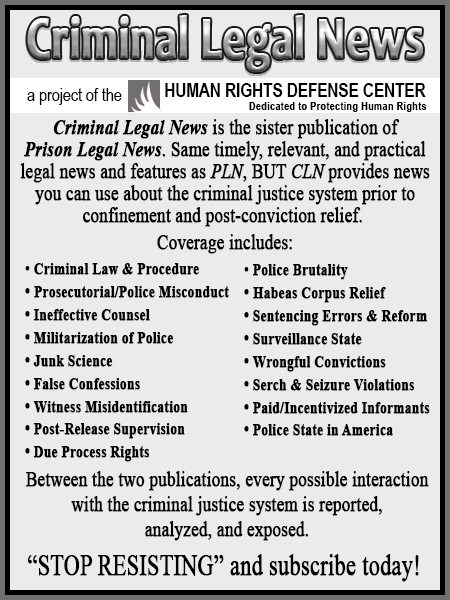New York Court of Appeals Announces Traffic Stop of Bicyclist Is Seizure Under Both Fourth Amendment and State Constitution Requiring Reasonable Suspicion of Crime or Probable Cause of Traffic Violation
by Richard Resch
The Court of Appeals of New York suppressed incriminating evidence recovered from a cyclist after police officers initiated a traffic stop of the cyclist, searched him, and recovered a loaded handgun, holding that the same standard for initiating a traffic stop of motor vehicles applies to bicycles and that the officers failed to satisfy that standard to initiate the traffic stop of the cyclist.
Lance Rodriguez was riding a bicycle on a two-lane road in Queens, New York, when an unmarked police cruiser pulled alongside him and ordered him to pull over. The officers claimed they witnessed him riding in a “somewhat reckless fashion in that two or three cars had to stop so they didn’t hit him or go around him,” though he was never issued a traffic citation. They also claimed that he “had only his right hand on the handlebars” because he was using his other hand to hold “something” over his pants. The officers were unsure what was in his pants but described it as “bulky.”
Once he was stopped, one officer asked Rodriguez if he had “anything on him,” and the officer testified that he was “caught … off guard” when Rodriguez answered in the affirmative, advising that he had a “gun in [his] waistband.” An officer restrained Rodriguez while another officer recovered the handgun, which contained eight rounds.
Rodriguez was charged with “several weapons counts” but moved to suppress the evidence seized from him on the ground that the search and seizure were unlawful. The trial court denied his motion, finding he was not seized under the Fourth Amendment and that officers established “founded suspicion” for the stop.
Rodriguez pleaded guilty and was sentenced to two years’ incarceration and one-and-a-half years of post-release supervision. On appeal, the Appellate Division found the search was justified as part of a “common-law inquiry when they stopped defendant.” Rodriguez timely appealed.
The Court began its analysis by noting that both the Fourth Amendment and Article I, § 12 of the New York Constitution prohibit “unreasonable searches and seizures.” A person is “seized” for Fourth Amendment purposes only when his freedom of movement is restrained either by physical force or a sufficient show of authority. United States v. Mendenhall, 446 U.S. 544 (1980). In determining whether a person’s freedom of movement is restrained, courts examine “all of the circumstances surrounding the incident” and inquiry whether “a reasonable person would have believed that [he was] not free to leave.” Id. In the context of police pursuits, a person is seized when he submits to police authority or is subdued by force. California v. Hodari D., 499 U.S. 621 (1991).
Importantly, under the Fourth Amendment, there is a bright line when it comes to traffic stops—“stopping an automobile and detaining its occupants constitutes a seizure.” Delaware v. Prouse, 440 U.S. 648 (1979). The Court observed that there is a similar rule under the state Constitution, stating that “diversion of an automobile from the flow of traffic ‘is a seizure implicating constitutional limitations’ [People v. Spencer, 646 N.E.2d 785 (N.Y. 1995)] … even if ‘the purpose of the stop is limited and the resulting detention quite brief [Spencer].” Under New York law, traffic stops (that is, seizures) “are lawful only when based on probable cause that a driver has committed a traffic violation” or “when based on a reasonable suspicion that the driver or occupants of the vehicle have committed, are committing, or are about to commit a crime.” People v. Hinshaw, 156 N.E.3d 812 (N.Y. 2020).
Turning to the issue of a traffic stop involving a bicycle, the Court stated that such a traffic stop, like an automobile stop, results in “anxiety” in the cyclist “in a manner that implicates the same social expectations regarding how reasonable people react to such authority.” See Brendlin v. California, 551 U.S. 249 (2007). Furthermore, as is the case for motorists, a police command to halt requires a cyclist to stop proceeding freely because any attempt to ignore it would clearly be met with an objection that no reasonable cyclist would feel free to ignore by failing to stop. Id. Finally, the Court stated that bicycle stops, just like automobile stops, implicate the “right to be let alone and to refuse to respond to police inquiry.” People v. May, 609 N.E.2d 113 (N.Y. 1992). This right would be meaningless if a police request for a cyclist to stop were characterized as anything other than a “full-blown seizure,” explained the Court.
The Court declared that there is no “meaningful constitutional distinction” between a traffic stop of a motorist traveling at five miles per hour and a cyclist doing the same. Thus, it announced: “We therefore conclude that bicycle stops, like automobile stops, are seizures under both constitutions, which the police lack the authority to conduct absent reasonable suspicion of criminal activity or probable cause that the bicyclist has violated the rules of the road.”
Turning to the present case, the Court held that the officers’ actions were unconstitutional from the very beginning because they possessed neither probable cause of a traffic violation nor reasonable suspicion of criminality prior to initiating the traffic stop. See Kansas v. Glover, 140 S. Ct. 1183 (2020) (“Like all seizures, the officer’s action[s]” regarding a traffic stop “must be justified at its inception.”); see also Hinshaw.
The Court summarily dismissed the officers’ vague claims for why they initiated a traffic stop of Rodriguez—(1) riding in a “somewhat reckless manner” and (2) primarily because he appeared to be “holding an object in his waistband” that they knew nothing about other than it was “bulky”—as insufficient to satisfy the standard it just announced. It explained that the officers’ alleged observations “fell well short of establishing reasonable suspicion of criminality” or an actual traffic violation. Additionally, the Court reasoned that at no point prior to the traffic stop did the officers suspect Rodriguez was in possession of contraband because they were, in fact, “caught … off guard” after the stop when he advised that he was carrying a handgun.
Accordingly, the Court reversed the order of the Appellate Division, granted the motion to suppress, and dismissed the indictment. See: People v. Rodriguez, 2023 N.Y. LEXIS 1889 (2023).
As a digital subscriber to Criminal Legal News, you can access full text and downloads for this and other premium content.
Already a subscriber? Login
Related legal case
People v. Rodriguez
| Year | 2023 |
|---|---|
| Cite | 2023 N.Y. LEXIS 1889 (2023) |
| Level | State Supreme Court |





